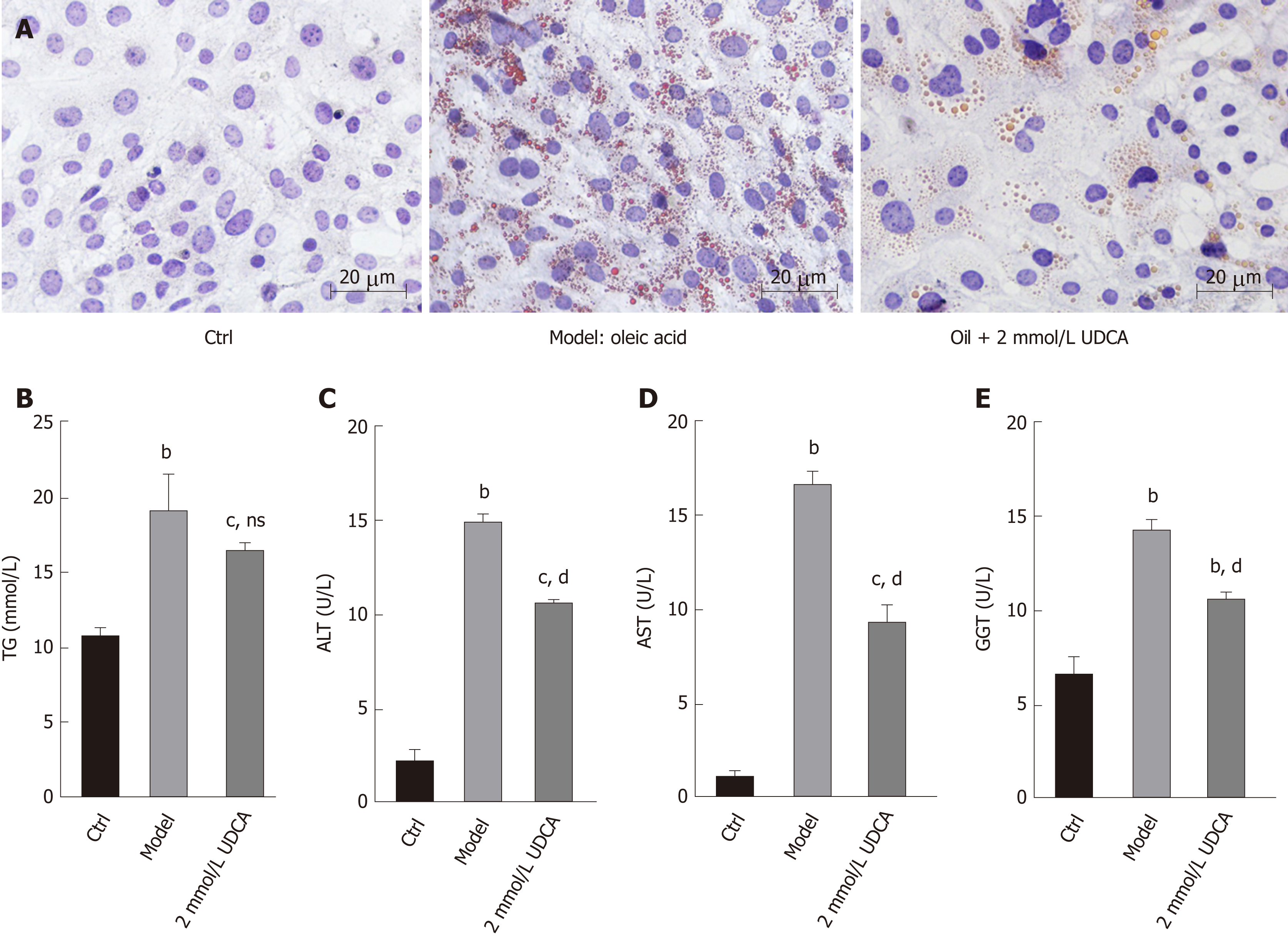Copyright
©The Author(s) 2019.
World J Gastroenterol. Mar 28, 2019; 25(12): 1492-1501
Published online Mar 28, 2019. doi: 10.3748/wjg.v25.i12.1492
Published online Mar 28, 2019. doi: 10.3748/wjg.v25.i12.1492
Figure 2 Impact of ursodeoxycholic acid on oleic acid-induced production of lipid profile.
A: Oil red O staining of oleic acid-induced LO2 cells after ursodeoxycholic acid treatment for 72 h. B-E: Measurement of intracellular levels of triglycerides (B), alanine aminotransferase (C), aspartate aminotransferase (D), and gamma-glutamyl transpeptidase (E) by ELISA assay. Scar bar: 20 μm. Data are shown as the mean ± SE. bP < 0.01, cP < 0.001 vs ctrl group; ns vs model group. dP < 0.001 vs model group. Ctrl: Control; UDCA: Ursodeoxycholic acid; OA: Oleic acid; TG: Triglycerides; ALT: Alanine aminotransferase; AST: Aspartate aminotransferase; GGT: Gamma-glutamyl transpeptidase; ns: No significant statistical difference.
- Citation: Hu J, Hong W, Yao KN, Zhu XH, Chen ZY, Ye L. Ursodeoxycholic acid ameliorates hepatic lipid metabolism in LO2 cells by regulating the AKT/mTOR/SREBP-1 signaling pathway. World J Gastroenterol 2019; 25(12): 1492-1501
- URL: https://www.wjgnet.com/1007-9327/full/v25/i12/1492.htm
- DOI: https://dx.doi.org/10.3748/wjg.v25.i12.1492









